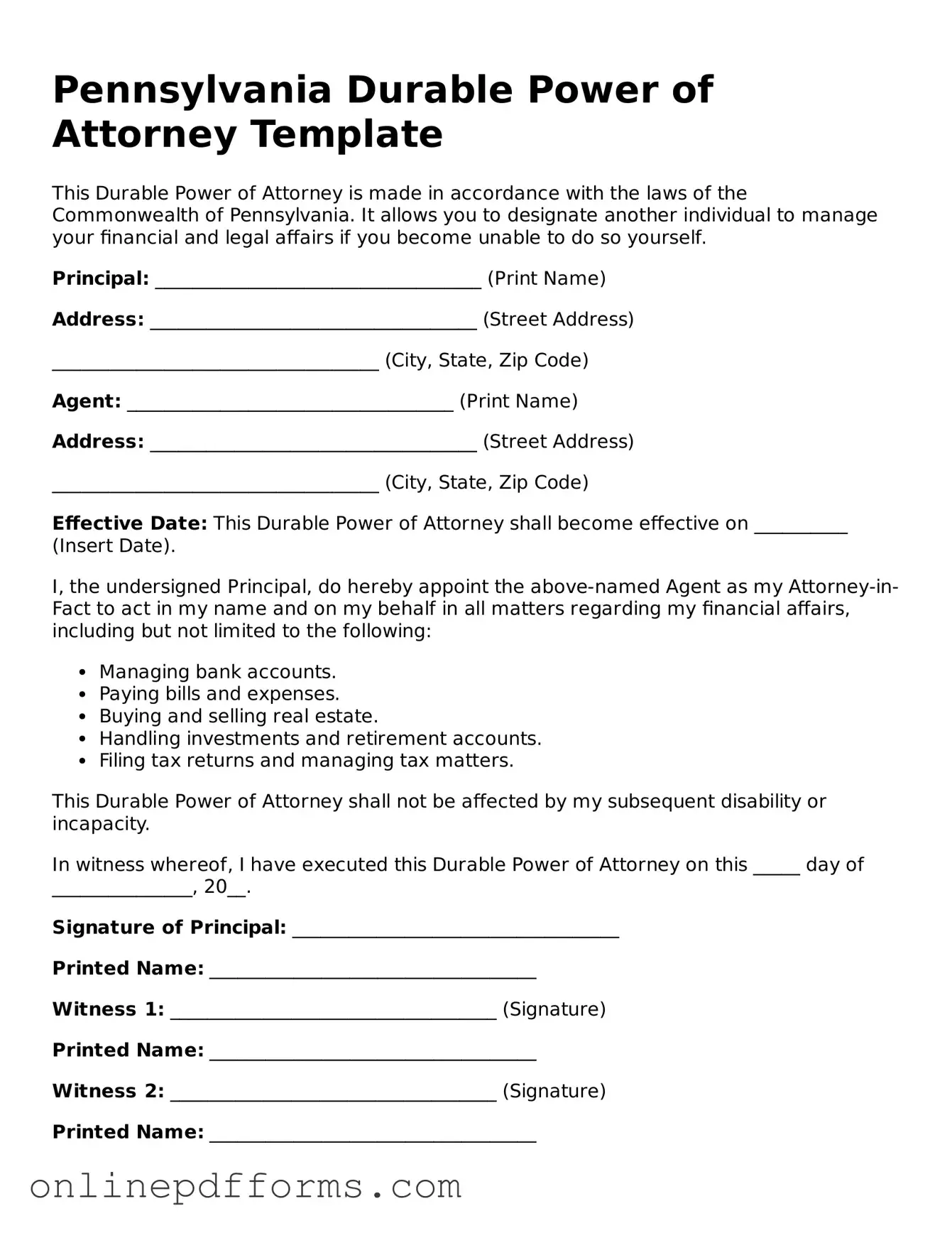The Pennsylvania Durable Power of Attorney (DPOA) form is similar to the General Power of Attorney (GPOA) in that both documents grant authority to an agent to act on behalf of the principal. However, the DPOA remains effective even if the principal becomes incapacitated, while the GPOA ceases to be valid under such circumstances. This distinction is crucial for individuals seeking to ensure their affairs are managed during times of diminished capacity.
Another document comparable to the DPOA is the Medical Power of Attorney (MPOA). The MPOA specifically allows an agent to make healthcare decisions for the principal when they are unable to do so. While the DPOA may cover financial matters, the MPOA is focused on medical choices, highlighting the importance of having separate documents for distinct areas of decision-making.
The Living Will is also similar to the DPOA in that it addresses the principal's wishes regarding medical treatment. However, the Living Will is more focused on end-of-life decisions, such as whether to receive life-sustaining treatment. Unlike the DPOA, which designates someone to make decisions, the Living Will provides guidance to healthcare providers and loved ones about the principal’s preferences.
A Healthcare Proxy is another document that bears resemblance to the DPOA. It allows an individual to designate someone to make healthcare decisions on their behalf. Like the MPOA, the Healthcare Proxy is specifically tailored for medical situations, emphasizing the need for clear directives in healthcare matters, which may not be covered by the DPOA.
The Revocable Living Trust shares similarities with the DPOA in that both can be used to manage assets and provide for the principal’s needs. A Revocable Living Trust allows the principal to maintain control over their assets during their lifetime and can help avoid probate upon death. However, it is a separate legal entity, while the DPOA simply grants authority to an agent without creating a trust structure.
When transferring ownership of a vehicle, it's crucial to utilize the appropriate documentation, such as the Auto Bill of Sale Forms, to ensure a smooth and legally compliant process. This form not only captures essential details about the transaction but also protects the interests of both the buyer and seller during the ownership transfer.
The Guardianship document is another related form, as it can be utilized when an individual is unable to manage their own affairs. A court appoints a guardian to make decisions for the incapacitated person. Unlike the DPOA, which is created voluntarily by the principal, guardianship is typically established through a legal process, emphasizing the need for intervention when individuals can no longer care for themselves.
The Consent to Treatment form is similar to the DPOA in that it allows individuals to authorize medical treatment. This document is often used in specific situations, such as for minors or individuals who cannot provide consent themselves. While the DPOA may encompass broader financial and legal decisions, the Consent to Treatment focuses solely on healthcare, reinforcing the necessity for clear and specific authorizations.
Lastly, the Financial Power of Attorney is akin to the DPOA as both authorize an agent to handle financial matters. However, the Financial Power of Attorney may not include the durable provisions that allow it to remain effective during the principal's incapacity. This can lead to gaps in financial management if the principal’s condition changes, making the DPOA a more comprehensive choice for long-term planning.
